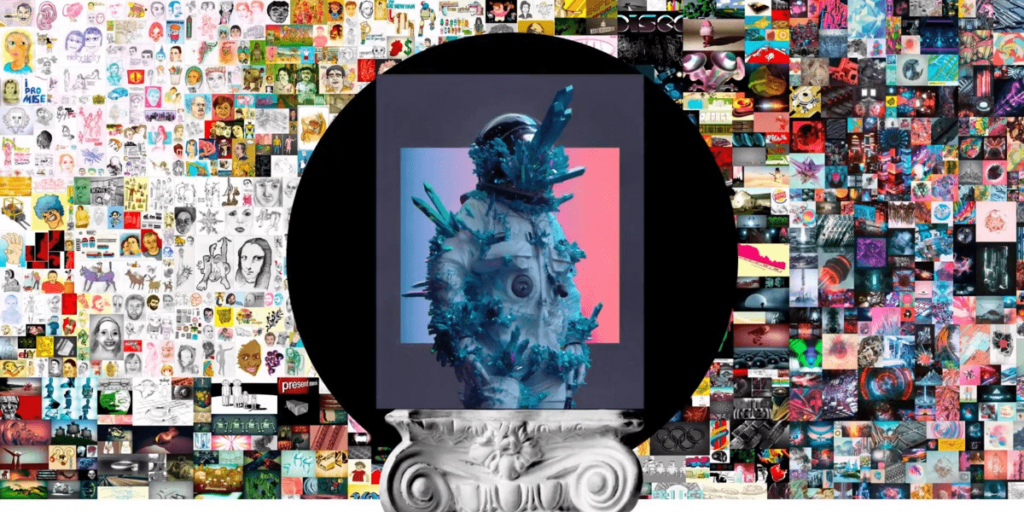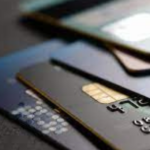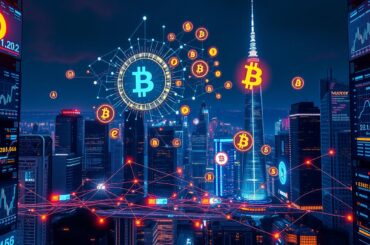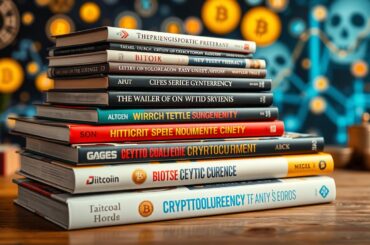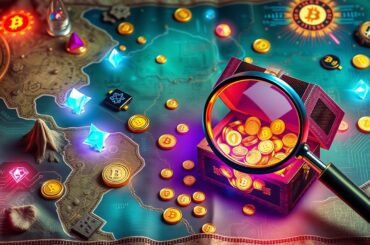Welcome to the world of digital assets. Here, blockchain technology and cryptocurrency are reshaping how we view ownership and value. NFTs, or non-fungible tokens, are unique digital items stored on a blockchain. They ensure secure and clear ownership. In this guide, we’ll explore NFTs, explaining what they are, how they function, and their advantages.
Starting your NFT journey, you’ll discover various digital assets. These include art, music, and virtual real estate. You’ll see how they’re showcased on blockchain platforms like Ethereum and Binance Smart Chain. You’ll also learn about NFT benefits, such as making money, reaching a global audience, and earning royalties.
Table of Contents
Key Takeaways
- NFTs are unique digital assets stored on a blockchain, allowing for secure and transparent ownership.
- Blockchain technology and cryptocurrency are essential components of the NFT ecosystem.
- NFTs can represent a wide range of digital assets, including art, music, and virtual real estate.
- NFTs offer benefits such as monetization, global reach, and royalty earnings for creators.
- Popular blockchain platforms for NFTs include Ethereum, Binance Smart Chain, and Flow.
- NFTs have the potential to democratize investing and streamline ownership rights.
- Concerns about NFTs include issues with ownership rights and limited liquidity affecting resale.
Understanding Non-Fungible Tokens (NFTs)

NFTs have become very popular lately, especially in 2021. They are unique because each token is different and can’t be swapped for another just like it. This is thanks to tokenization, which makes a digital copy of something special on a blockchain.
Smart contracts on a blockchain make sure NFTs are unique and owned by someone. This tech helps in making, keeping, and moving NFTs safely and openly. So, NFTs let people own special digital things, like art, music, or collectibles.
What Makes Something Non-Fungible
Something is non-fungible if it’s special, like a piece of art or a collectible. In the digital world, this specialness comes from tokenization. It makes a digital version of something unique. This lets NFTs be bought, sold, and traded like real things.
The Technology Behind NFTs
NFTs use blockchain and smart contracts for their magic. This tech makes unique digital things that can be kept and moved safely. Blockchain also keeps a clear and safe record of who owns what, which is key for digital ownership.
Common Types of NFTs
There are many kinds of NFTs, like digital art, music, and collectibles. These can be found and traded on online places, thanks to smart contracts and blockchain. Some examples include:
- Digital art
- Music
- Collectibles
- Virtual real estate
The NFT market has grown a lot, especially in 2020 and 2021. Thanks to tokenization and smart contracts, we now have unique digital things. This has opened up new markets and chances for digital ownership.
| Year | NFT Market Value |
|---|---|
| 2020 | $250 million |
| 2021 | $17 billion |
The Evolution of Digital Ownership
Digital ownership has changed a lot over time. Digital collectibles and virtual assets have become big. NFTs, for example, have changed how we see online ownership. They started in 2012 with colored coins on the Bitcoin blockchain.
NFTs became more popular with CryptoKitties in 2017. This made people interested in digital collectibles. Now, we have places like OpenSea, Rarible, and Foundation to buy, sell, and trade virtual assets.
New business models like fractional ownership have come up. It lets many own a piece of something valuable. This makes it easier for more people to get involved and earn money. Blockchain technology makes digital ownership safer and more open, cutting down fraud and fake items.
Some big NFT sales show how valuable they are. The Nyan Cat NFT sold for almost $600,000. Jack Dorsey’s first tweet NFT sold for nearly $3,000,000. These sales show the growing worth of digital collectibles and the role of online ownership today.
Setting Up Your Digital Wallet
To buy, sell, and store NFTs, you need a digital wallet. It should support both cryptocurrencies and NFTs. This is key for managing your digital assets safely.
A digital wallet offers digital storage for your NFTs, keeping them safe. With NFTs becoming more popular, protecting your investments is crucial. Look for wallets with strong security, like two-factor authentication and encryption.
Popular Wallet Options
Popular digital wallets include MetaMask, Trust Wallet, and Coinbase Wallet. They support many cryptocurrencies and NFTs. When picking a wallet, think about transaction fees and security.
Security Best Practices
To keep your wallet safe, use strong passwords and enable two-factor authentication. Also, update your wallet software regularly. Be careful when linking your wallet to NFT marketplaces, sticking to trusted platforms to avoid scams.
By following these tips and choosing a trustworthy wallet, you can safely store and manage your NFTs and other cryptocurrency wallets. Always focus on online security to safeguard your investments and have a smooth NFT experience.
Choosing the Right Blockchain Platform
Choosing the right non-fungible tokens (NFTs) platform is key. There are many options, each with its own features, fees, and needs. It’s important to pick the one that fits your goals. Platforms like Ethereum, Solana, and Polygon support NFTs differently, so knowing their strengths and weaknesses is crucial.
Consider the minting cost and how fast transactions are. For example, Solana has a low minting cost of $0.00012, much less than Ethereum. Polygon also has lower costs and faster speeds than Ethereum. Here are some top NFT platforms:
- Ethereum: High minting cost, slow transactions
- Solana: Low minting cost, fast transactions
- Polygon: Low minting cost, fast transactions
- Flow: Moderate minting cost, fast transactions
It’s also important to think about how well these blockchain platforms work with cryptocurrency exchanges and NFT marketplaces. The NFT market is big, with a size of $2.3 billion and $50 million in daily sales. You need a platform that works well with these places.
In short, picking the right blockchain platform is crucial for a good NFT experience. Look at minting costs, transaction speeds, and how well they work with cryptocurrency exchanges and NFT marketplaces. This way, you can confidently explore the NFT world.
Navigating NFT Marketplaces
NFT marketplaces are online places where people can buy and sell unique digital items. These sites have become more popular, attracting artists, collectors, and investors. OpenSea, Rarible, and Foundation are some of the well-known ones.
It’s important to know the different types of NFT marketplaces. Some focus on specific digital art, while others have a wide variety. Online marketplaces make it easy to find, buy, and sell NFTs. They also have good security and easy-to-use interfaces.
Using NFT marketplaces has many benefits. They are accessible worldwide, decentralized, and keep records safe. They also help creators make money from their digital work.
When picking an NFT marketplace, consider these things:
- User-friendly interface
- Robust security measures
- Wide range of NFTs available
- Global accessibility
- Decentralization
| NFT Marketplace | Specialization | Security Measures |
|---|---|---|
| OpenSea | Digital art and collectibles | Two-factor authentication and encryption |
| Rarible | Digital art and gaming items | Smart contract-based security and encryption |
| Foundation | Digital art and unique assets | Decentralized and community-driven security measures |
In summary, NFT marketplaces are where people trade unique digital items. Knowing about the different types and their features helps users confidently explore the NFT world. This way, they can make smart choices when buying and selling on digital art platforms.
Making Your First NFT Purchase
Buying NFTs is exciting, especially for those into digital art. First, create an account on a trusted NFT marketplace like OpenSea or Rarible. Then, connect your digital wallet. This lets you look at NFTs and decide what to buy online.
When looking at NFTs, think about the artist’s reputation and the artwork’s uniqueness. Ethereum is a top choice for NFTs because of its security. You can also check out other places like SuperRare or Nifty Gateway to find your perfect piece.
Some big NFT sales include Beeble’s $69 million piece and Jack Dorsey’s tweet sold for millions. These show how valuable NFTs can be in the digital art world. Here’s how to buy your first NFT:
- Research and choose a reputable NFT marketplace
- Connect your digital wallet to the marketplace
- Browse available NFTs and evaluate their value
- Make an offer or bid on the NFT you want to purchase
Keep up with the latest NFT market news and watch out for scams. With the right knowledge, buying NFTs can be very rewarding for art lovers and collectors.
| Marketplace | Blockchain | Transaction Fees |
|---|---|---|
| OpenSea | Ethereum | Varying gas fees |
| Rarible | Flow | Lazyminting, no gas fees |
| AtomicHub | Wax | Low transaction fees |
Creating and Minting Your Own NFTs
To start making NFTs, you first need to get your digital asset ready. Then, pick a minting option, and decide on a price and royalty rate. This is key in digital art creation. It lets you show off your unique work and maybe even make money from sales.
For NFT minting, you have many choices, like Ethereum and Solana. Each has its own costs and rules. So, it’s important to find the best one for you.
Some important things to think about when making and minting NFTs include:
- Choosing a reputable blockchain platform
- Understanding the fees associated with NFT minting
- Setting a competitive price and royalty rate for your digital asset
By following these steps and doing your homework, you can make and mint your own NFTs. This way, you join the growing world of digital art creators and collectors.
Understanding NFT Value Factors
Several factors influence NFT valuation. Rarity, demand, and creator reputation are key. For example, digital art appraisal looks at a piece’s uniqueness and scarcity. Also, cryptocurrency market trends can change NFT demand and value.
Most NFTs for sale cost between $1 and $10. But, some have sold for millions. For example, Cryptopunk digital collectibles and Beeple’s NFT sold for $69 million.
Important factors in NFT valuation include:
- Utility
- Liquidity
- Tangibility
- Rarity
- Interoperability
- Ownership history
- Social proof
Knowing these factors helps buyers and sellers make smart choices. As the market grows, keeping up with cryptocurrency market trends and digital art appraisal is crucial for accurate NFT valuation.
By understanding these factors and staying informed, investors can maximize their NFT investments. They can navigate the complex world of digital art appraisal and NFT valuation effectively.
| Factor | Description |
|---|---|
| Rarity | The uniqueness and scarcity of an NFT |
| Demand | The level of interest and demand for an NFT |
| Creator reputation | The reputation and credibility of the NFT creator |
Legal and Tax Considerations
Understanding the legal and tax aspects of NFTs is key. NFT law and digital art law are still evolving. It’s important to know the current rules. Cryptocurrency taxation also matters a lot in NFT deals, as tax rules can change based on where you are.
The IRS sees digital assets, like NFTs, as property, not money. This means NFTs face capital gains tax. The tax rate depends on if the gain is short-term or long-term. Keeping detailed records of NFT deals is crucial.
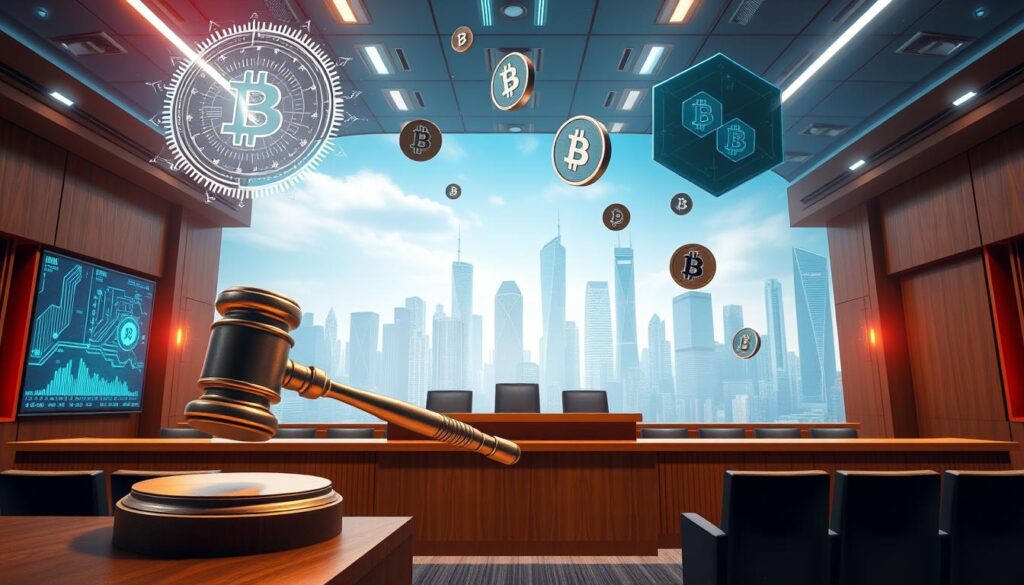
Important NFT tax points include: * Capital gains tax hits NFT deals * Tax rates differ based on gain type * Keeping good records is vital * NFTs are taxed as property, not currency * Cryptocurrency tax rules also apply to NFTs
Talking to a tax expert is a must to follow all tax rules for NFTs. Knowing the legal and tax sides of NFTs helps you move through the digital art and collectibles world with ease.
Building Your NFT Portfolio
When you start investing in NFTs, it’s key to have a solid plan. You need to think about spreading your investments, looking at the long game, and managing your portfolio. By investing in different digital art and NFTs, you can lower risks and possibly earn more.
Diversification is a big part of NFT investing. It means putting your money into various NFTs like art, collectibles, and virtual land. This helps you avoid big losses and boosts your chances of winning. Also, keeping up with market trends and tweaking your plan is important.
Diversification Strategies
- Invest in a variety of NFT types, including digital art, collectibles, and virtual real estate
- Consider investing in different blockchain platforms, such as Ethereum and Bitcoin
- Use a Dollar-Cost Averaging (DCA) strategy to minimize the impact of market volatility
Good portfolio management is crucial for NFT investing success. You should keep an eye on how your investments are doing, make changes when needed, and make sure they match your long-term goals. With a careful and informed approach, you can confidently explore digital art collecting and NFT investing.
Avoiding Common NFT Scams
To stay safe from NFT scams, knowing the different types is key. Scams like phishing, fake marketplaces, and fake NFTs are common. About 80% of NFTs made are fake, showing how crucial online security is.
Scams like the Evil Ape NFT scam took $3 million before vanishing. The Frosties NFT scam made $1.3 million. These cases show why you should be careful and check if a project is real before investing. For more on avoiding cryptocurrency scams, keep up with NFT market news.
Here are some ways to dodge NFT scams:
- Research the project and its developers well
- Make sure the marketplace or platform is real
- Watch out for unsolicited offers or investments
- Keep your digital wallet and accounts safe
By using these tips and keeping up with NFT market news, you can avoid NFT scams and cryptocurrency scams. This way, you can have a safe and secure time in the world of online security.
| Scam | Amount Lost |
|---|---|
| Evil Ape NFT scam | $3 million |
| Frosties NFT scam | $1.3 million |
The Future of NFTs and Web3
The future of NFTs is linked to Web3 and blockchain tech. As NFTs grow, we’ll see new uses in many fields. For instance, NFTs can show who owns digital things like art, collectibles, and even real estate.
Here are some possible future developments:
- NFTs might become more common in gaming and virtual reality worlds.
- They could also become more popular in the art and collectibles markets.
- NFTs might be used more for identity verification and supply chain management.
As blockchain tech gets better, NFTs will find even more uses. They could help tokenize real-world items and open up new digital markets. The future of NFTs and Web3 looks bright and full of possibilities.

Conclusion
In this guide, we’ve delved into the exciting world of non-fungible tokens (NFTs). This technology is changing how we own and use digital assets. We’ve learned about blockchain technology and how to navigate NFT marketplaces.
NFTs are making a big impact in many fields like art, music, gaming, and real estate. They let creators, collectors, and innovators do new things. This technology allows us to own and control our digital items in a way we never could before.
The future of NFTs looks bright, especially with the rise of the metaverse. As blockchain technology becomes more common in our lives, NFTs will open up even more possibilities.
However, there are still challenges like environmental concerns and market ups and downs. But the industry is growing and finding new ways to solve these problems. As more people use NFTs, we’ll see even more amazing uses that will change our digital world.
FAQ
What are Non-Fungible Tokens (NFTs)?
NFTs are unique digital assets stored and verified on a blockchain. They show ownership of digital items like art and collectibles.
How do NFTs work?
NFTs use blockchain tech to create a unique digital certificate of ownership. This makes it possible to trade digital items.
What are the different types of NFTs?
NFTs include digital art, collectibles, and virtual real estate. They represent a wide range of digital assets with unique properties.
How do I set up a digital wallet for NFTs?
To set up a digital wallet, choose a reputable provider and store your private keys securely. Connect your wallet to NFT marketplaces. Online security is key when managing digital assets.
Which blockchain platform is best for NFTs?
Many blockchain platforms support NFTs, each with its own benefits. Popular ones include Ethereum, Solana, Polygon, and Binance Smart Chain. The best platform depends on your needs and preferences.
How do I buy and sell NFTs on marketplaces?
On NFT marketplaces, create an account, browse NFTs, make bids or purchases, and handle transactions. Understanding the marketplace’s features and fees is crucial for successful trading.
What should I consider before buying my first NFT?
Before buying your first NFT, research the NFT, its creator, and the market. Rarity, utility, and provenance can affect an NFT’s value.
How do I create and mint my own NFT?
To create and mint an NFT, prepare your digital asset, choose a minting platform, and set properties like price and royalty rates. This turns your digital creations into unique, tradable assets.
What factors influence the value of an NFT?
An NFT’s value is influenced by rarity, demand, creator reputation, and utility. Understanding these factors helps in making informed decisions when buying, selling, or creating NFTs.
What are the legal and tax considerations for NFTs?
NFTs raise legal and tax considerations like intellectual property rights and tax reporting. It’s important to stay updated on the legal landscape and consult professionals for compliance.
How can I protect myself from NFT scams?
To avoid NFT scams, practice strong online security, research thoroughly, and only use reputable platforms. Staying vigilant and educating yourself about scams can protect your digital assets.

